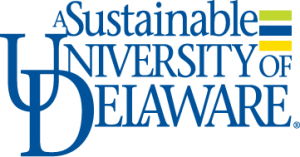Delaware Environmental Institute
Development of sensors and analytical methods for inorganic carbon and nutrient monitoring and research in the Delaware Bay and Inland Bays and other environments.
Faculty Mentor: Dr. Wei-Jun Cai
Graduate Student Mentor: E. Mike Scaboo
Professional Staff Mentor: Dr. Najid Hussain
Research Description:
The extensive use of nutrients has led to eutrophication and the associated hypoxia or anoxia (as a result of excessive organic matter decomposition in bottom waters) in coastal waters. A current community concern is that eutrophication and the hypoxia or anoxia can have a synergistic effect with anthropogenic CO2increase in the atmosphere to acidify waters in coastal bays and harm shellfish growth and ecosystem health. Hence, there is a growing need to provide field-deployable, inexpensive, and environmentally sustainable sensors for real-time monitoring of nutrients, O2and inorganic carbon systems such as pH, total dissolved inorganic carbon and [CO32-] in coastal waters.
In particular, the lack of rapid, reliable, and cheap sensing capabilities which can identify and quantify trace amounts of nutrient elements (P and N in particular) limits the research questions we can answer, inhibiting the development of operational monitoring systems that could provide critical information to policy makers across the region. Therefore, we propose to develop new sensors and monitoring capability to address the multiscale environmental issues endemic to Delaware. The undergraduate student(s) will learn about using the sensors and analytical methods in our lab and will help with field deployment. One student will focus more on the sensor part and the other one will be more on analysis of carbon cycle parameters including total dissolve inorganic carbon (DIC), total alkalinity and calcium concentration for ground-truthing the sensors and for research purposes. These parameters are critical for the health of carbonate-shell bearing organisms and the ecosystem.
Research Questions:
1.Can we develop hybrid, low cost sensors for detecting a suite of key chemical and biological properties and deploy them as arrays in key environments in order to serve as a pre-emtive warning of potential environmental stressors and disasters in rivers and coastal environments?
- How do eutrophication induced acidification due to organic carbon decomposition in bottom waters and atmospheric anthropogenic CO2induced acidification due to fossil fuel use combined to together to cause excessive acidification in Delaware Bay and Inland Bay waters?
Student Learning Objectives: Professional and Research Skills
This internship focuses on the development of the following professional and scientific skills.
|
Broad Professional Skills |
Specific Skills |
|
Express ideas in writing |
Write descriptions of research procedures, create a poster of your research |
|
Express ideas verbally |
Discuss research activity in lab meetings, present poster at symposium; discuss estuarine acidification concept with visitors during UD CEOE’s annual Coastal Day and other out-reach activities. |
|
Work independently |
Conduct sensor stability and response tests; lab analysis of CO2- carbonate parameters |
|
Maintain professional attitude and work principles (i.e. integrity, responsibility, diligence, following ethical standards) |
Be on time, learn procedures, ask questions if unsure, respect everyone you work with; learn to work as a team member in a large laboratory of 12 members. |
|
Broad Scientific Research Skills |
Specific Skills |
|
Understand scientific terms |
Eutrophication, hypoxia, carbon cycle, CO2 flux, ocean acidification, and global warming. |
|
Locate scientific articles and resources |
Conduct searches for literature about hypoxia and ocean acidification |
|
Use scientific tools |
DIC analyzer, Alkalinity titration system, spectrophotometric pH analysis, Ca2+ titration, pH and pCO2 sensors. |
|
Recognize simple patterns in research data |
Vision recognition (eye balls), quantitative correlation using Excel, and basic statistics. |
|
Understand research questions |
Will discuss research questions on day 1. Will repeat in lab meetings, and will encourage the students to ask their own related research questions or sub-questions as they collected data and analyze the data. |
|
Read and understand research articles |
Will assign review papers on current topics for the students to read, will ask the students to discuss with us or present at the lab meeting. |
|
Apply research tools and techniques in research experiments |
Use pH and nutrient sensors, DIC analyzer and TA titrator to conduct research (eg. Learn new laboratory techniques related to nutrient and carbon cycling.) |
|
Analyze research data |
Use Excel to analyze data |
|
Understand, apply, and explain scientific concepts and theories |
In lab meetings, with lab personnel, and during research symposium |
|
Identify appropriate research methods |
Design experiments using biogeochemical in situ sensors, novel techniques in the lab. |
Prerequisites:
The students should already have basic chemistry knowledge and skills. Prefer the students have already taken Analytical Chemistry, Introduction to marine sciences or Environmental chemistry or equivalent courses.
Work Environment and Expectations:
Laboratory environment: Work location is mostly in room 021 LDL with occasional site visit of the Delaware Bay and Inland Bays; schedule is flexible. Students will work part time during the fall and spring semesters, and full time during UD Winter Session, January 7-February 8, 2019. Students will also participate in a retreat, communications workshop and end of internship spring symposium.

